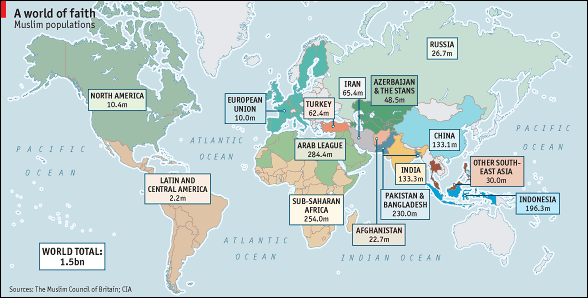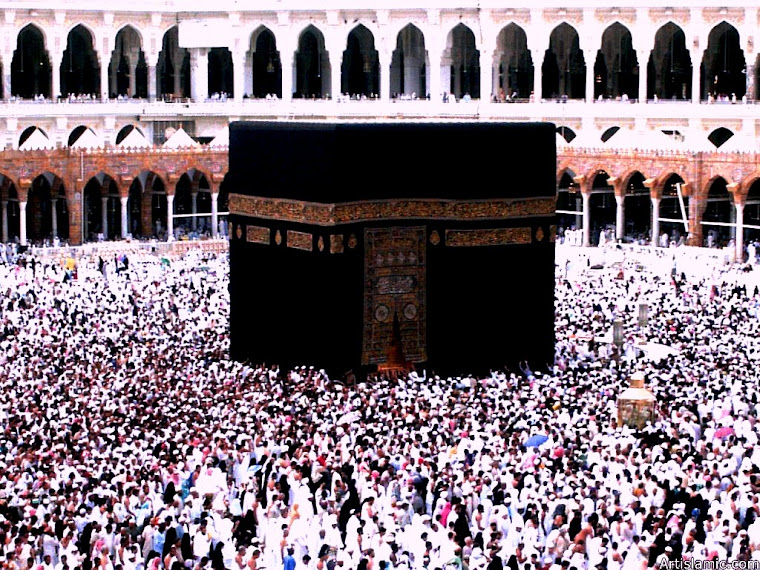There are various attempts to address the question on Palestine and prospects for peace seem to be gray and narrow. It has been 90 years and the problem persists. A plausible investigation that might mitigate the problem is by the help of integrating an International Relations theory, which will, describes, explains and predicts an international or regional phenomenon.
The paper would focus on Alexander Wendt’s Social Constructivism theory from his 1999 Social Theory of International Politics in addressing the major contemporary conflicting issues. Constructivism examines the role of norms and, in fewer cases, identify in shaping international political outcomes. Henry Nau of George Washington University has provocatively theorized that a country’s national interest begins with what kind of society the nation is, not just what its geopolitical circumstances are (Checkel 3).
Culture of Anarchy: Characterizing the Relationship between Israelis and Palestinians
Israel manifests the Hobbesian culture because centralized authority can only create the shared ideas. Any shared ideas that emerge will be fragile and fleeting, subject to potentially violent change in the distribution of power. The logic of Hobbesian anarchy is “war of all against all” (self-help system). In this culture, Israel has shared knowledge of at least three things:
1. that she is dealing with other states,
2. that this being is their enemies and therefore threaten their life and liberty, and
3. how to deal with their enemies – how to make war, communicate threats, arrange surrenders and balance power?
The Palestine Arabs possessed the Lockean culture based on a different role structure, rivalry rather than enemy. Unlike enemies, rivals expect each other to act as if they recognize their sovereignty, their “life and liberty,” as a right and therefore, not try to conquer or dominate them. Unlike friends, the recognition among rivals does not extend to the right to be free from violence in disputes.
Tenets of Constructivism Redefined the Origin of Problem
Zionism entrusted as structure of human association wherein its constructed identity and interest is determined by shared ideas rather than nature or material forces. It is a political movement, which claims that Palestine belongs to the Jews (Mehdi 11). It has based its claim on historical grounds and appealed to religious and humanitarian sentiments.
The events that caused the exodus of the Palestine Arabs did not begin in 1948 or for that matter with the Balfour Declaration in 1917. They began much earlier in the history of the conflict between the Christian West and the Muslim East. This is a struggle that cannot be fully understood or appreciated unless one grasps the problem as it originated in the Ottoman Empire (Howley 3).
By British declaration of intent to create a “Jewish National Home in Palestine,” David Ben-Gurion reads out the proclamation of the State of Israel on May 14, 1948 (Howley 7). Although the dependence of individuals on society, primary actors are much more autonomous from the social system in which they are embedded.
The idealist ontology of social constructivism is particularly attractive since it offers the prospect of “via media” (Baylis 247). In 1954, Palestinian group, primarily in Gaza, began to take commando action and conduct raids as constructivists see the materialistic sociology structure. This is the most fundamental fact about society in nature and organization of material forces e.g. forces of destruction (Wendt 1999).
Leonard Stein, authoritative historian of Zionism, argued that the real purpose of the Zionist movement was to detach Palestine from its people and form a very effective guard for the Suez Canal thus turning it into a Jewish State. However, Palestinian Liberation Organization (PLO) that lately became the Palestine National Authority (PNA) has emerged due to focus on the role of self-organization in the constitution of social kinds as social constructivists claimed in discourse of outsiders.
According to International Law Prof. Henry Cattan, the Palestine Mandate was invalid on three grounds:
1. By endorsing the Balfour Declaration and accepting the concept of the establishment of Jewish national home in Palestine, it violated the sovereignty of the people of Palestine and their natural rights of independence and self-determination.
2. It violated, in spirit and in letter, Article 22 of the Covenant of the League of Nations, under the authority of which it purported to be made.
3. The endorsement and implementation of the Balfour Declaration conflicted with the assurances and pledges given to the Arabs during the 1st World War by Great Britain and the Allied Powers. The denial to the Palestine Arabs of their independence and the subjection of their country to the immigration of foreign people were breach of those pledges.
Constructivist’s Socialization Approach for Prospects of Peace
Domestic or transnational non-state actors have important decisive effects on the frequency or manner in which states engage in war (Wendt 1999). The formation of the diplomatic Quartet (Tony Blair as the international envoy) in the Middle East, which comprises of the United Nations, the European Union, Russia, and the United States, to shed light and hope for peace.
Wendt looked at the structure of ideas in the social system. The structure of any social system will contain elements of material conditions, interests and ideas. These elements are equally necessary to explain social outcomes. Three major issues to be tackled are the future borders of a Palestinian state, the question on Jerusalem, and the future of the refugees.
Common knowledge is the answer for this devastated problem. Common knowledge according to Wendt concerns actors’ beliefs about each other’s rationality, strategies, preferences, and beliefs as well about states of the external world. These beliefs need not be true, just believed to be true. Common Knowledge requires interlocking beliefs meaning those beliefs must be accurate beliefs about others’ belief. Common knowledge is an interaction-level phenomenon as one of the three levels of analysis relevant to theorizing about world politics.
Thus, the Arabs must recognize the existence of the Israeli People and in return, they should acknowledge the Palestinian nationalism and right to self-determination. Culture both has causal and constitutive effects (Wendt 1999). Constructivists are more interested on its constitutive effects. The relationship between agency and the structure is not of interaction but of mutual constitution. This could manifest the religious attachment of Israelis and Palestinians to Jerusalem.
Former US Pres. Clinton suggested that the Holy City maybe divided – but shared. Jewish West Jerusalem remains under Israeli sovereignty, and the Palestinians control most of East Jerusalem. As for the Old City, the Jewish Quarter is Israel’s jurisdiction; the Muslim, Christian and Armenian sections are Palestinian-controlled. The Islamic sites on the Temple Mount fall under Palestinian sovereignty, while Israel controls the Western Wall and the space below the mount.
The Collective Self-Esteem may apply on the question of the refugees because it refers to a group’s need to feel good about itself, for respect or status. Refugees can be compensated in lieu of being allowed to return to Israel. Those living in camps in Syria, Jordan, and Lebanon can move to the new Palestinian state or become citizens of the countries they’re in.
As for the future territory, the Palestinians establish their own state in Gaza and almost the entire West bank. Israel gives up a land corridor between the two, allowing free flow of traffic.
Conclusion for the Moment: Dark Future Curtails
The Arab League proposed a peace initiative as advocated by Saudi Arabia but was rejected by the Israeli government. The Palestinians split in two as the militant Hamas party, the dominant parliament, which the EU and US declared as a terrorist group but Russia, has maintained its ties, controls the Gaza. The moderate Fatah Party led by Pres. Abbas, who formed an unconstitutional new cabinet appointing Fayyad as the new Prime Minister, controls the West Bank. US Pres. Bush gave a $30 billion military aid to Israel to preserve its superiority and to counter negative influences of Al-Qaeda, Hezbollah, Iran, and Syria. He also calls for Mideast peace conference by November 2007 to discuss issues for negotiation like:
1. specific, fixed, agreed-upon boundaries for Israel and for the Arab states in the region
2. the status of Jerusalem
3. the political and civil status of Jewish Israelis currently living within the West Bank including East Jerusalem, and the Gaza Strip
4. the political and civil status of Palestinians currently living Within Israel
5. the political and civil status of Palestinians and Jews currently living outside the borders of the British Mandate of Palestine
6. compensation for Palestinians and Israelis who were forced to leave their residencial areas
7. the allocation of resources such as water among states in the region
8. the assurance of mutual security for all states and all peoples in the region
9. the role of the international community in supervising a negotiated settlement
On contemporary note this October 2007 the Philippine government will be having a contingency plan for the overseas Filipino workers in the Middle East in the event armed hostilities break out between Israel and Iran. Its assurance came in the wake of reports to retaliatory strikes being prepared by Iran in case of an attack by Israel. Middle East tension heightened following Israel’s alleged intrusion into Syria’s airspace.
To sum up the fundamental message this paper has been trying to convey: "Identity matters". The way people think about themselves, about the world, and about their place within it determines categories such as bad/good and self/other, determines the categories by which we assess what is or is not legitimate and desirable. If this is true –as it seems to be the Palestinian problem − questions then arise such as: how should identity be described or modeled?
One of the declared aims of this paper has been to provide a ‘map’ of the way disciplines like Constructivists think about the conflict. This map, while introductory, aims to expose a set of problems, principle among which is that of finding a via media between over-abstraction and particularlism when one confronts the simplification necessarily involved in the production of knowledge. As such, this paper purports to offer no ‘answers’, and one hopes that this open approach results in a paper which readers can come back to having experienced more of the literature on Islam and the Middle East, and navigate with greater and deeper critical insight the arguments (and silences) which have been set out here.
Consequently, these two national groups have fought over one small piece of land in the Levant for over 90 years. Palestinians and the Arab countries have been unable to defeat Israel’s militarily; Israel has been unable to eliminate Palestinian nationalism. Neither of these conditions is likely to change in the near future. Thus, the choice facing Israelis and Palestinians is whether to continue to fight indefinitely or to search for negotiated settlement to their conflict. With mutual recognition, mutual acceptance of the right of national self-determination and mutual acceptance of fixed and secure boundaries for all states in the Levant, a way may be found to resolve this enduring and destructive dilemma in world politics.
Books
Baylis, John and Smith, Steve. The Globalization of World Politics: An Introduction to International Relations. 2nd ed. Oxford: Oxford University Press, 2001, pp. 242-48.
Cattan, Henry. Palestine and International Law: The Legal Aspects of the Arab-Israeli Conflict. 2nd ed. London: Longman Group, 1978.
Committee on the Exercise of the Inalienable Rights of the Palestinian People. The Origins and the Evolution of the Palestine Problem 1917-1988. New York: United Nations Publication, 1990.
Gerner, Deborah J. One Land, Two Peoples: The Conflict over Palestine (Dilemmas in World Politics). Kansas: Westview Press, 1991.
Howley, Dennis C. The United Nations and the Palestinians. New York: Exposition Press, 1975.
Mehdi, Mohammad T. Peace in the Middle East. New York: New World Press, 1967.
Wendt, Alexander. Social Theory of International Politics. Cambridge: Cambridge UP, 1999.
Journals
Checkel, Jeffrey T. “Social Constructivism in Global and European Politics (A Review Essay).” Advanced Research on the Europeanisation of the Nation-States (ARENA) 15 (2004):1-26.
Journal of Palestine Studies. “The Taba Negotiations (January 2001).” JSTOR Archives 31 (2002): 79-89.
Periodicals
Romulo, Beth Day. ”Tony Blair’s Mideast Diplomats Offensive.” Manila Bulletin 4 Jan. 2007: 10.
---. “Saudi Arabia Takes Stand.” Manila Bulletin 22 Feb. 2007: 10.
“Israel Rejects Arab Peace Initiative.” Manila Bulletin 30 Mar. 2007: 15.
“Palestinians Split in Two as Hamas Controls Gaza.” Manila Bulletin 16 June 2007: 15.
“New Palestinian Cabinet Sworn In.” The Philippine Star 18 June 2007: A-25.
“Blair Named Mideast Troubleshooter.” The Philippine Star 29 June 2007: A-25.
“Bush Calls for Mideast Peace Initiative.” The Philippine Star 18 July 2007: A-24.
“Putin, Abbas to Seek Way Forward in Middle East.” Manila Bulletin 29 July 2007: 22.
“Israel’s Olmert Announces $30 billion US Defense Aid.” The Philippine Star 30 July 2007: A-26.
“RP Contingency Plan Ready for Israel-Iran Conflict.” The Philippine Star 28 Sept. 2007: 8.



















No comments:
Post a Comment